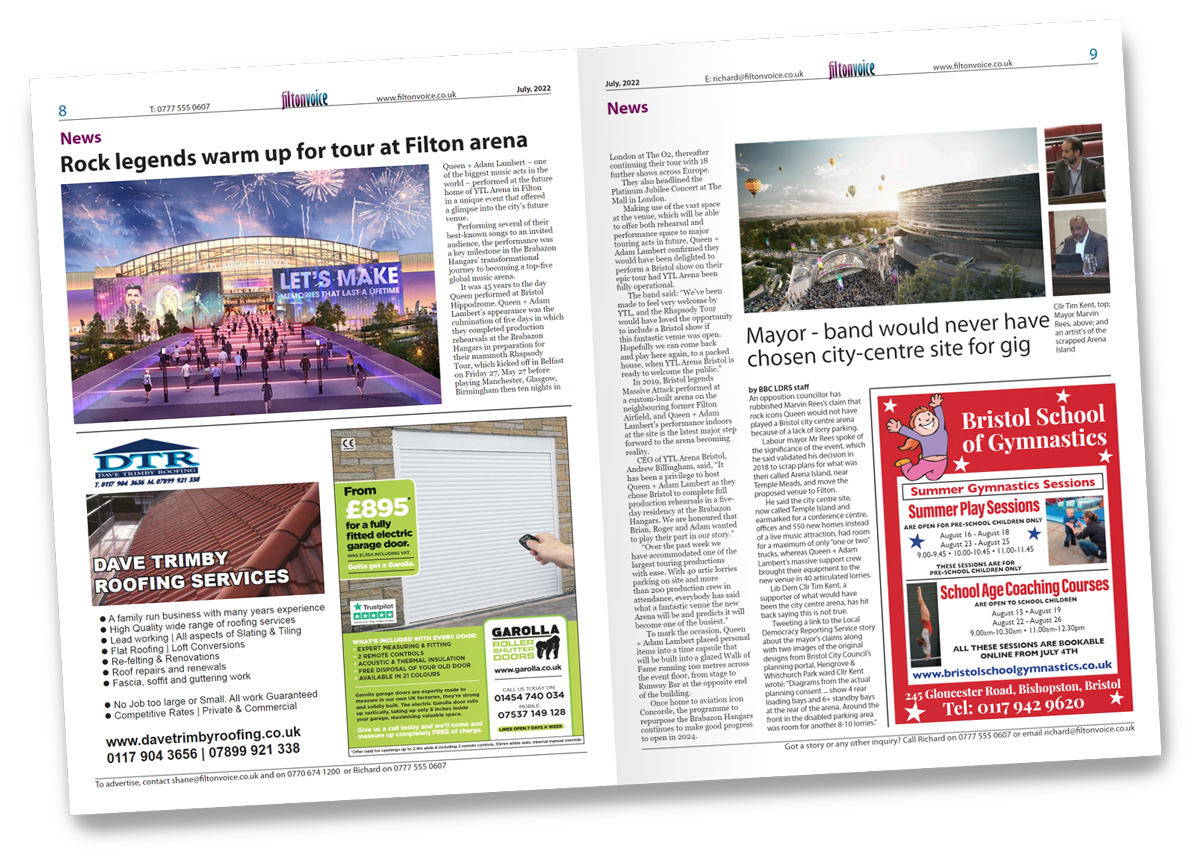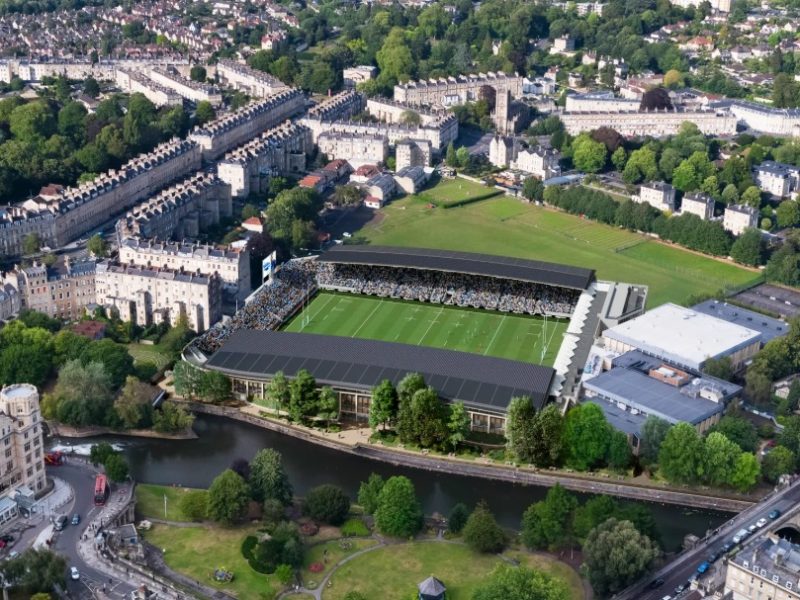By Harry Mottram: Planners are scrutinising the latest proposals from Bath Rugby for a new stadium to replace the current temporary East Stand along with an upgrading of the rest of the arena. The decision is eagerly awaited by both proponents of the plans and opponents. At stake is the principle of the status of the Recreation Ground and whether a private company can build on a public park and in effect reduce the available green space for the public to enjoy. On Thursday 27 August, Bath Voice understands Bath and North Somerset Council’s planning committee will finally look over the revised plans – assuming the meeting is not put back due to the technical reasons to another date. UPDATE: the plans are not on the agenda for the 27th August. We wait to see when they will be discussed.
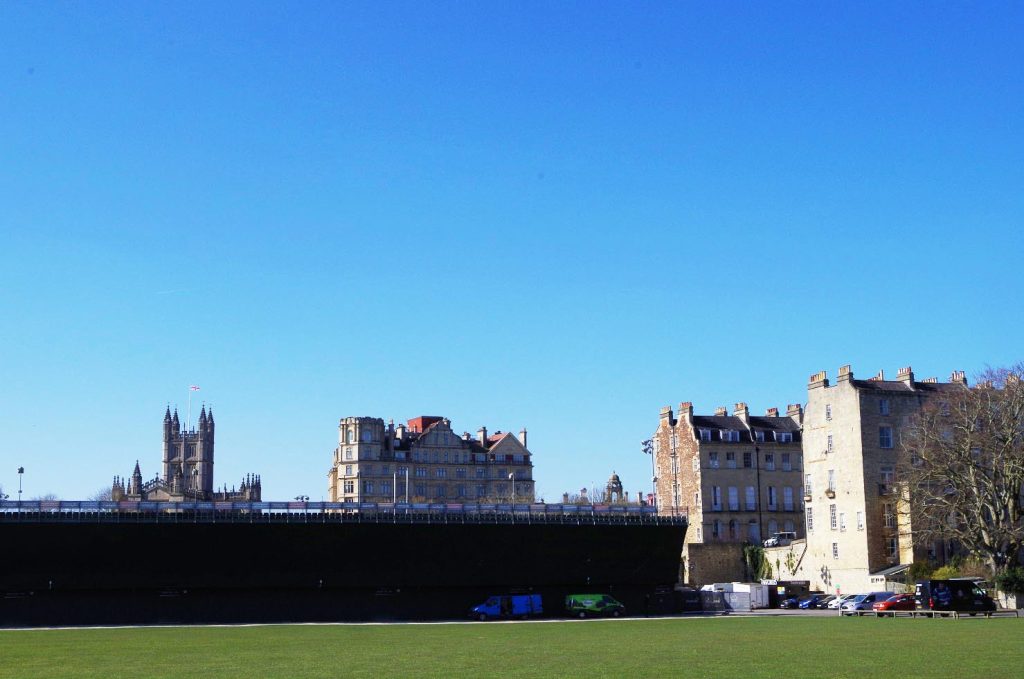
In a statement on Bath Rugby’s website Tarquin McDonald, Chief Executive of Bath Rugby said: “The amended application reflects valuable feedback from the public, key stakeholders, and Bath & North East Somerset Council (B&NES), addressing technical points identified since the initial submission last year. A planning committee is targeted in the New Year.
“The new stadium design boasts significant improvements, including lowering the heights of the West and East Stands. These enhancements are not just aesthetic; they aim to elevate the matchday experience while preserving the unique character of the surrounding area.
“This submission is another important milestone for the club and the city. We’ve listened closely to the community and our stakeholders, as well as the numerous statutory consultees that are invited to comment on planning applications, and we are committed to delivering a stadium that not only meets the needs of our fans but also respects the rich heritage of Bath.”

Bath Voice has spoken to many fans of the club but not all agree with the proposals citing the historic nature of the Rec being open to all and the size of the planned stadium in the World Heritage site of Bath.
When an alternative proposal was put forward by two Bath architects Mark Wilson Jones and Jakub Ryng of Apollodorus Architecture that reimagined the new stadium as an oval Roman colosseum, together with a classical rebuild of the leisure centre there was positive feedback from not just Bath Rugby fans but many others. The main reason being the design would have blended the old leisure centre into the colosseum and created a new piece of architecture worthy of the city.
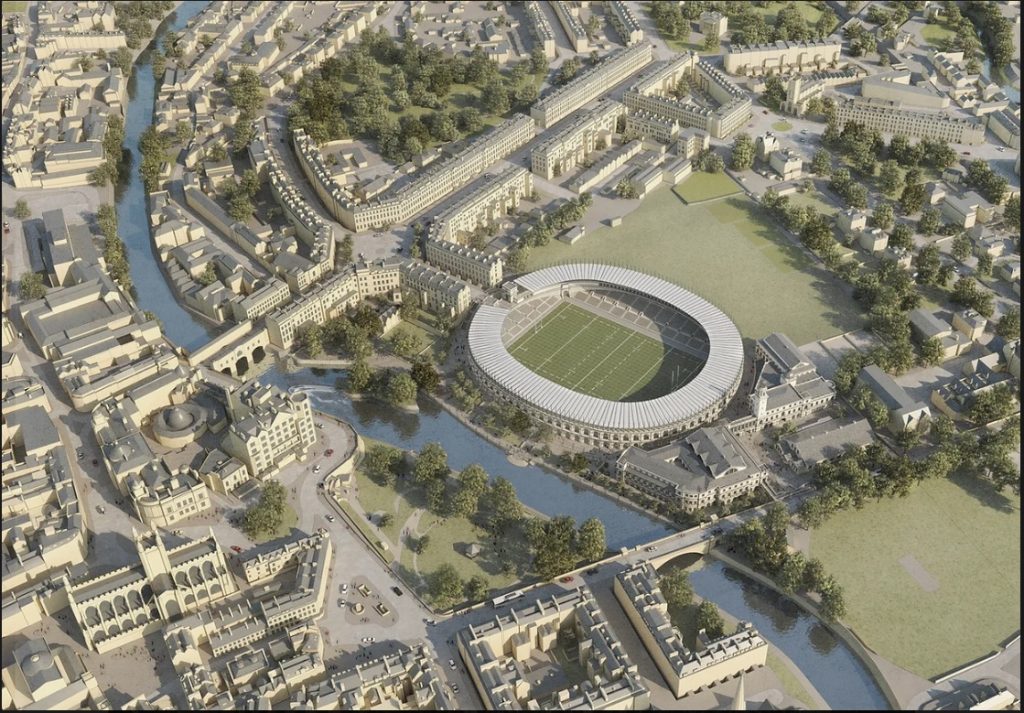
Those plans were rejected by the club who put forward their Stadium for Bath proposals.
Their plans include a new curved roof which reduced the height of the stands, resulting in ‘increased views of the city and surrounding hills along with enhanced landscaping to the river and a redesign of East and West Stand facades’. The plans take the capacity of the stadium up to 18,000 which would make it the third largest club ground in England overtaking Gloucester’s 16,115, Northampton’s 15,249 and the Harlequin’s Stoop ground of 14,816 capacity but well short of Bristol and Leicester who can house more than 25,000 spectators.
Other improvements say Bath Rugby are an increase in community use with new stadium facilities with its all weather pitch, new Spring Gardens Walk by the river with a riverside café/restaurant, club shop and museum for non-matchday use – and keep the mature trees already there.
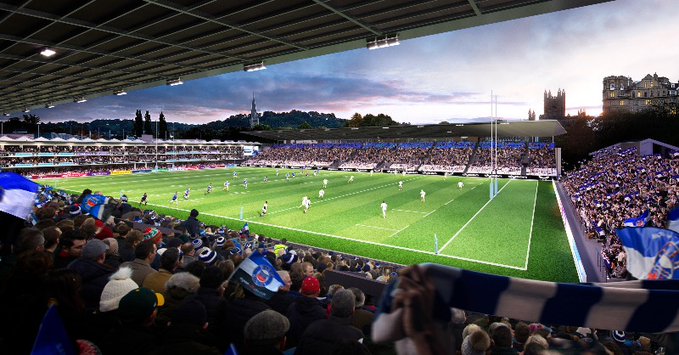
That all sounds good although there has been criticism of these aspects. The cafe/restaurants say detractors will take business away from the city’s hospitality sector while Green Party Councillors say the trees will be affected by the building work as their roots could be damaged.
The Greens are also critical of the travel arrangements a larger stadium would need after Active Travel England’s (ATE) findings. It was a case for a formal deferral of the application, citing flaws in the transport strategy they said.
“We have consistently argued that this stadium development is ill-conceived and would have a detrimental impact on our city,” said Cllr Saskia Heijltjes. “Active Travel England’s findings confirm our worst fears about the transport plans. The proposals fail to provide a genuine, safe choice for sustainable travel, which is a key requirement for any major development in a city like Bath.”
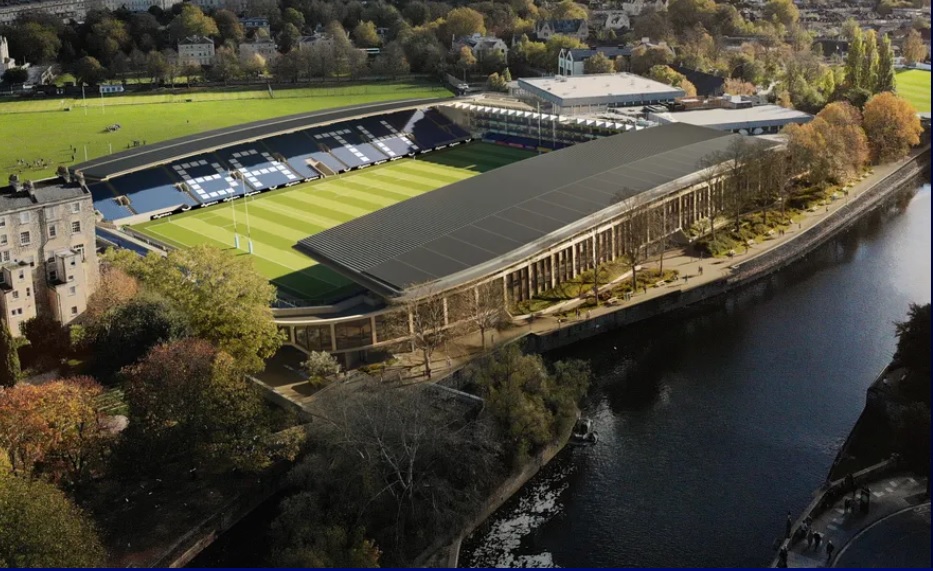
ATE raised concerns about insufficient cycle parking, unsafe pedestrian access to the stadium, and a Travel Plan that lacks the necessary legal commitments to be effective. Neighbours have also objected since on matchdays there is considerable disruption, noise and congestion – and there would be a smaller Rec as the East stand would encroach further. The Friends of the Recreation Ground are also critical of the plans with a number of objections. Bath’s World Heritage status is in danger of being lost as ICOMOS (International Council on Monuments and Sites) – a non-governmental organization that works closely with UNESCO to protect cultural heritage worldwide – said they had major concerns about the design. The Friends main objection is about the status of the park which they point out was defined in 1956 when the Recreation ground was gifted to the Mayor, Aldermen & Citizens of Bath, conditional on it being used in perpetuity as a public open space for amateur recreation, with Bath Council to act a Trustee to uphold the conditions of legacy.
The leisure centre built in 1975 technically broke the rules of the original covenant and will eventually have to be demolished if the rules are applied but there is an argument for replacing it with an upgraded design in the future.
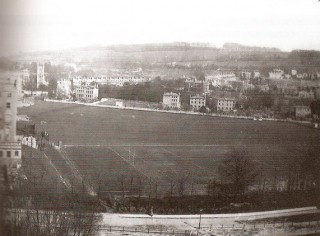
A rough time line: 1890s the land becomes available for sports and recreation under a lease by the owner Captain G W Forester; 1894 Bath Rugby Club uses part of the Rec with other sports including cricket, croquet and football; in the 1920s The Bath and County Recreation Ground Company Limited hold the lease; in 1956 the Rec is conveyed to the Mayor Aldermen and the Citizens of the City of Bath (the corporation); in 1974 Bath City Council are in charge and they in turn passed it to Bath and North East Somerset Council who set up Bath Recreation Limited – an independent charity to run it.
It’s the terms of the charity which have been the main source of dispute as to what they can and cannot do with the Rec. The charity is charged with keeping the Rec for use as outdoor recreation facilities for the benefit of the public. Bath Rugby believe by allowing the public to use the new all weather pitch and facilities such as toilets, classrooms etc, they are abiding by the rules.

Rugby Union turned professional in 1995 when Bath RFC could officially pay their players which changed the economics of the game. Wages for a large squad, plus the support staff and general running costs add up and last year despite their success on the pitch Bath barely broke even. In 2010 Bruce Craig bought the club outright and he has made it his mission to keep Bath in the top flight with a stadium to match – and by increasing the hospitality and merchandising hopes it will make a profit. It is a private business and it relies on Craig’s wealth to sustain it and to develop the stadium since he has made loans to the club. There is no denying Craig is a Bath Rugby fan – and the club brings prosperity to the city for the hospitality sector from taxi cabs to hotels and pubs. Fans come from across the country come to cheer on the Blue, Black and Whites and the new stadium will only increase that support.
To help finance the extensions to the ground the cafe/restaurant and club store are essential – and are common place in football and rugby stadiums. With rugby only played on a few dates compared to football and with a new all weather pitch other sports could also be played there and concerts and other events could be staged to help pay for the changes since building the new stadium will run up a bill of tens of millions of pounds – possibly more than £100 million depending on variables.
Critics point out the club is a tenant of the Rec and could build a stadium with planning permission elsewhere including land they own off the London Road.
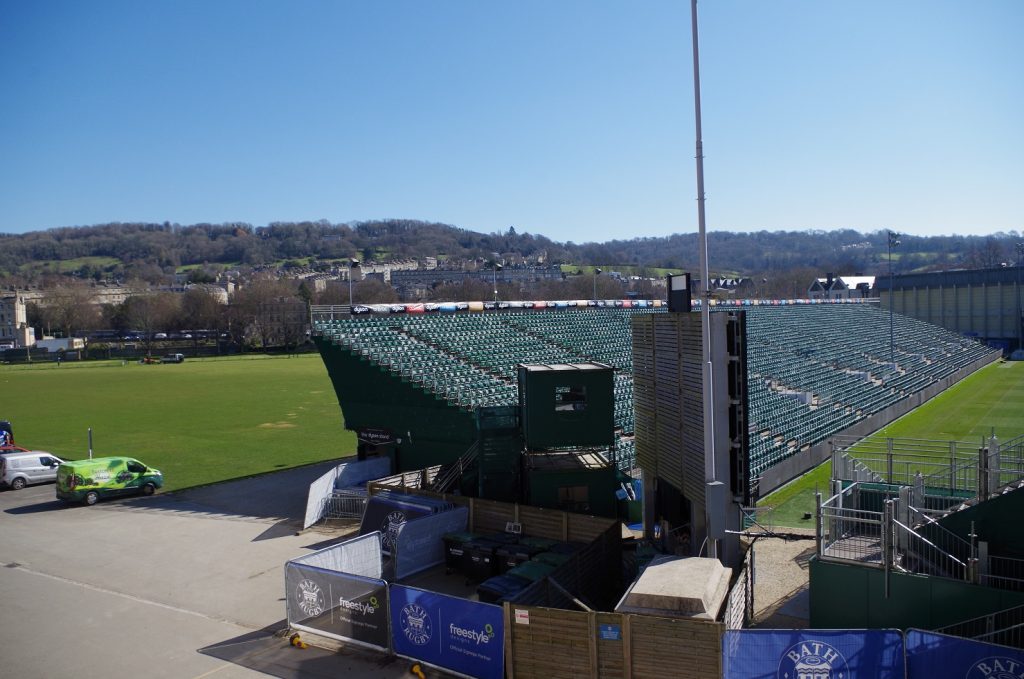
Bath Rugby Limited is listed at Companies House (Company number 03170814) along with all the details including Bruce Craig as a ‘person with significant control’. In fairness to Bath Rugby they give answers to the many questions the plans have prompted on the website at https://www.bathrugby.com/stadium-for-bath
The Friends of the Rec have a website with their arguments and information at https://www.friendsofbathrec.org/ and they are a voluntary organisation concerned to keep the Rec as a public park for everyone to use.
Now it is up to the planners – perhaps not an enviable task for the council staff and its councillors as they are not going to keep everyone happy. Whatever the outcome Bath Voice will report on the decision in the following months and on our website as soon as it is announced.
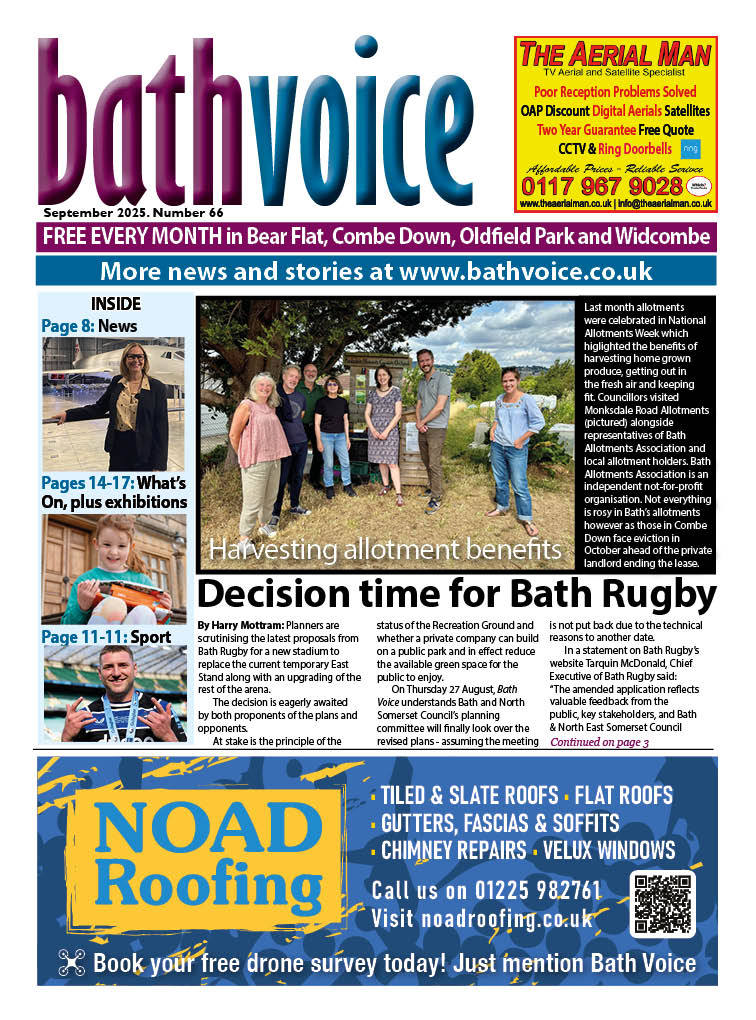
Bath Voice Monthly Newspaper is distributed free to thousands of homes and some supermarkets – distributed from the first of the month. Harry Mottram is the News Editor
Email him at news@bathvoice.co.uk Bath website: https://bathvoice.co.uk/news/
Bath Facebook: https://tinyurl.com/bdtf2kep Also on Twitter: https://twitter.com/bath_voice Read the newspaper online at :https://issuu.com/bathvoice
To advertise to thousands of Bathonians call Shaun on 07540 383870 or email him on sales@bathvoice.co.uk
Harry Mottram is a freelance journalist. Follow him on Facebook, LinkedIn, Twitter, Instagram, YouTube, Pinterest, Telegram, TikTok and Email:harryfmottram@gmail.com
Website: www.harrymottram.co.uk

